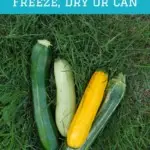
While there are hundreds, if not thousands, of ways to consume zucchini fresh, preserving them turns out to be a bit trickier.
You see, zucchini is a low-acid food.
And if you know that much about canning, then you already have come to the wisdom that in order to safely preserve your glut of zucchini, you will need to add sufficient acid in order to prevent it from spoiling. This usually comes in the form of vinegar, which is unfortunate, when all you really want is a slice of double chocolate zucchini bread in the thick of winter.
The consolation prize is zucchini pickles.
You can make jar after jar of those and never run out of sweet and sour pickles again!
Freezing zucchini
Don’t despair about the idea of perfectly sliced zucchini bread in the middle of January, however. There is a genius way around that!
Freezing shredded zucchini is the answer to all your cold weather troubles. Once it is tucked away safely in the freezer, all you need to do is thaw the shredded zucchini before baking, being sure to squeeze out the excess moisture. There you have it. Zucchini bread crisis averted.
You can then use the remainder of your shredded zucchini in pancakes, muffins, omelettes, or in your soon-to-be-famous garlic Parmesan zucchini casserole.
1. Shredded zucchini
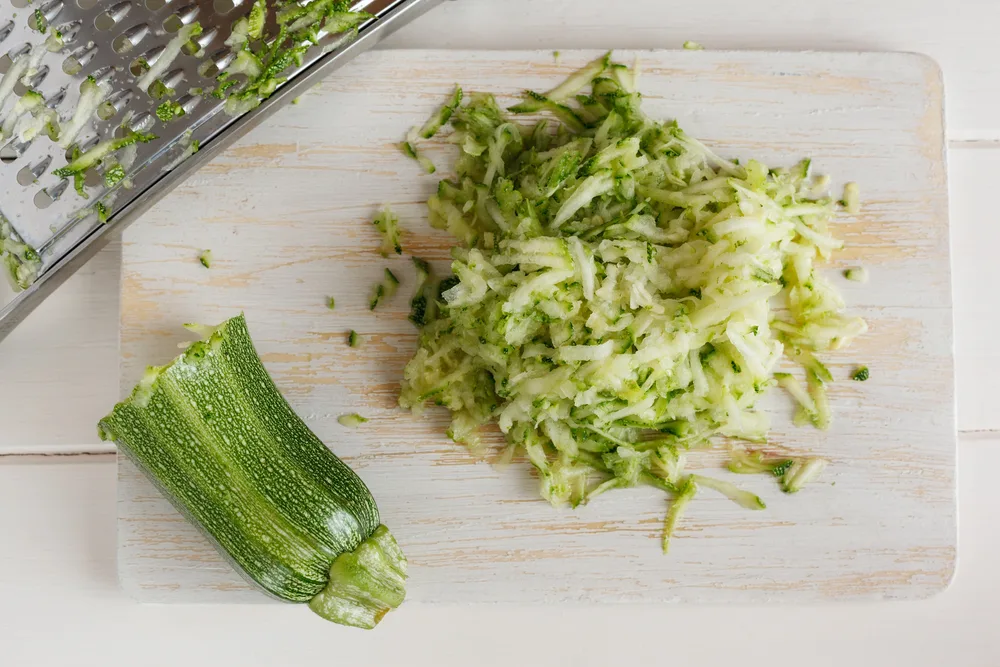
Quite possibly the easiest way to preserve a glut of zucchini is to freeze it.
Within the preservation method of freezing, you can cut it, slice it or dice it any way you like.
As you’ve just read, shredded zucchini can be used in several ways, and not just in baking. You can also add the frozen (and thawed) zucchini to pasta dishes, stir-fries and soups too.
2. Zucchini slices
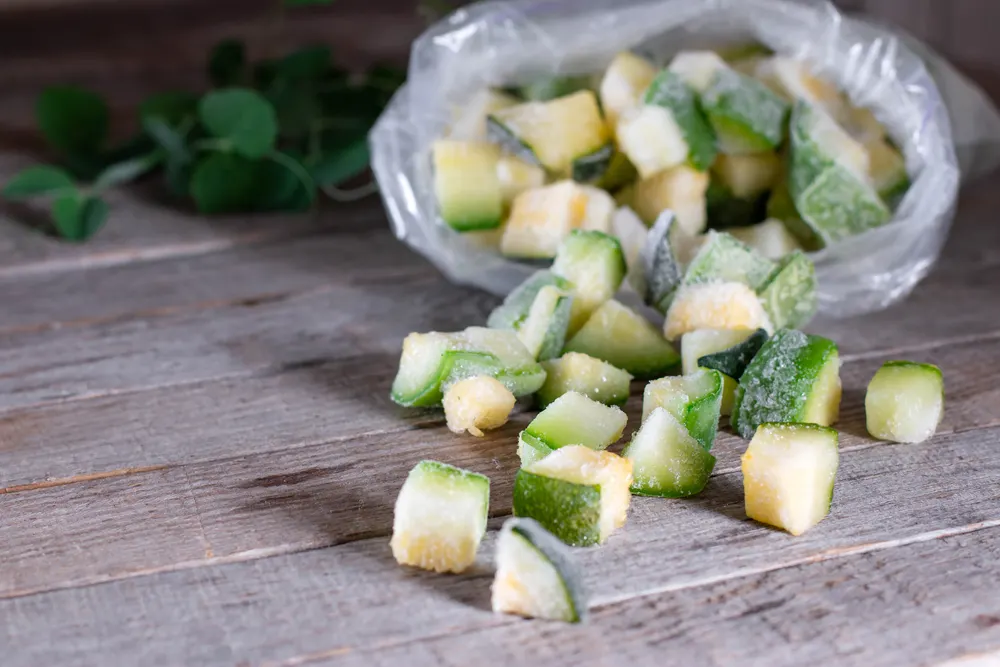
If your mind is less focused on making zucchini bread, then you are likely one to appreciate the abundance of zucchini for its other nourishing qualities.
The best example of this is a winter-warming minestrone soup. Naturally, if you are eating in season, this would be a summer recipe.
However, preserving your garden produce is what a simple, homesteading life is all about. You can’t go wrong with chopped cubes, slices or wedges of frozen zucchini – just keep the pieces frozen until ready to add them to the pot.
You may also consider creating a frozen vegetable mix from your garden. It makes winter time meal preparation a summer breeze.
3. Frozen zoodles
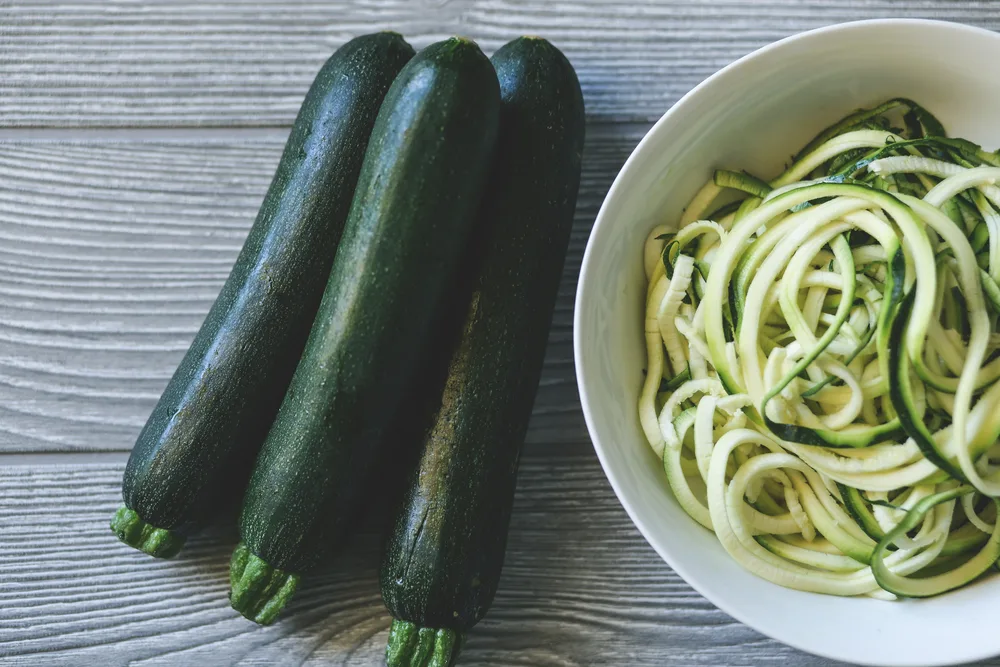
One way to get kids to eat more vegetables is to make eating them fun. Another, is to have them get involved with the growing of food. How exciting is it to watch a zucchini plant grow leaps and bounds day after day?
And what about eating the flowers? That is an enjoyable experience too!
Zoodles, however, are a fantastic way to preserve a low-acid and low-carb food. That being said, they may be a bit mushy when re-heating and cooking.
How much you can enjoy the end product depends on your expectations. If what you are after is a nice texture, it is a better bet to dehydrate your zoodles, or get your fill of eating them fresh.
Otherwise, pre-frozen zoodles may be a great time-saver as the noodles can be added to boiling water and cooked for just a minute or two. If you add them to soup at last minute, there is nothing to lose.
4. Halved zucchini
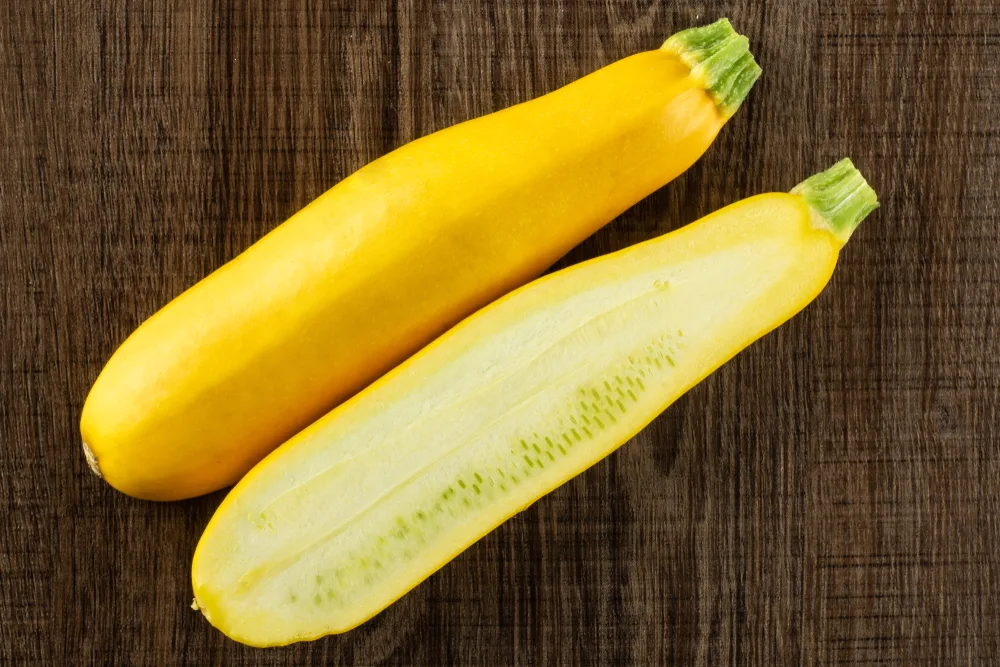
Halved zucchini, even though it may take up a more significant space in your freezer, is ideal for baking zucchini boats. Just be sure to thaw them completely before putting in the oven, topped with the other ingredients.
5. Zucchini purée
One of my favorite things about home canning, is that you get to make things you could never buy from the store. Yet, somehow they are quite charming and useful. It makes you wonder why no one else is eating them. Kind of like hop shoots…
Zucchini purée is similar.
It is not just a baby food, it is a sort of mild green sauce that you can add to soups, stews and baked goods.
If you don’t know what you are missing, you can check out the details here:
How to Freeze Zucchini Purée @ Grow A Good Life
Freezing zucchini is the easiest and fastest way to get your zucchini straight from the garden and into a safe storage space for months to come.
Dehydrating zucchini
If your freezer is already full (or with the intention to be stuffed) with corn, peas, chard, kale, broccoli, cauliflower or carrots (also low-acid foods), then you may, or may not have sufficient room left over for zucchini.
With a garden that produces a lot of zucchini, several pounds in a less than ideal year, it is good to have several preserving options.
For the sake of diversity and for the difference in flavors.
Pickles, relishes and chutneys we’ll get to in the canning section, but for now, get your dehydrator ready and get to business, preserving your glut of zucchini by dehydrating them.
If you are seeking to save pantry space, dehydrating at least a portion of your harvest will accomplish just that.
4 pounds of zucchini can be dried to fit into one pint sized jar!
To go even further, you could blend the dehydrated zucchini into a powder, and use it in soups, stews, even smoothies for a subtle vegetable kick.
Zucchini chips seem to be the most popular though, so let’s start with that.
6. Zucchini chips
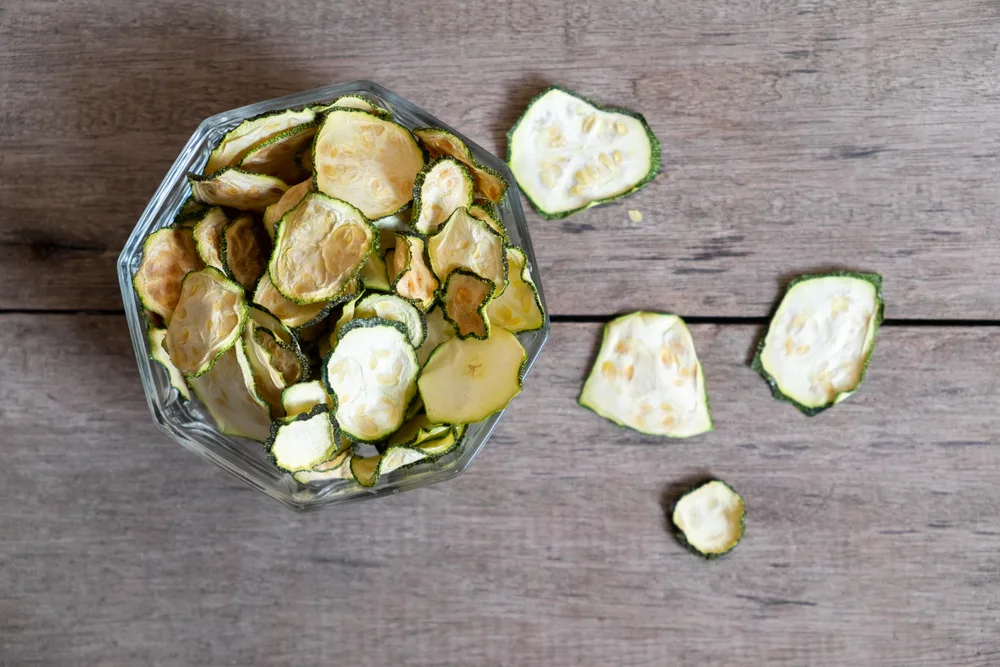
Sometimes you are in the mood for a light snack, that also happens to be low-carb. If you are looking after your health in this way, or just happen to be adventurous enough to try something new, zucchini chips are the perfect treat.
In the first step, slice your young zucchini as evenly as possible, by hand or with a machine. Sprinkle with a little olive oil for a lovely crunch, then season them with spices of your choice. Homemade garlic powder tastes amazing, as does thyme, oregano and sesame seeds with a pinch of salt.
Mix everything together, spread it out on your dehydrator trays and let them dry for 8 hours at 150 °F (70 °C).
The lower the temperature, the more vitamins will remain intact.
For the full recipe, check out this article on how to make crunchy keto zucchini chips. You’ll be glad you did!
7. Zucchini pasta (noodles)
A less common way is to dry your zoodles, or zucchini noodles.
To make these, you will either need a steady hand and a sharp knife, a two-sided vegetable peeler or a spiralizer.
If you are going to be eating oodles of zoodles when squash, carrots and zucchini is in season, I encourage you to consider getting a spiralizer. It may just change your life! Plus, you can use it for loads of other vegetables and fruits including apples. How cute would dehydrated cinnamon spiralized apples be?!
Here’s how you can dehydrate your own low-carb zucchini noodles.
8. Dried and shredded zucchini
Again, if you are lacking freezer space, another option is dehydrating. Within that, shredded zucchini is a real space saver.
You can totally dry out the shredded zucchini, to the point where it is crunchy. Once it has cooled, transfer it to a container and be sure to use it up within a month or two. To preserve dried, shredded zucchini for longer, simply vacuum seal it.
When you are ready to prepare lunch or dinner, sprinkle or crumble the dried zucchini shreds over salad. Or add them to any baked dish – cookies, muffins and breads included.
You can dehydrate both zucchini and other summer squashes, to save the summer flavor for later.
Canning zucchini
Last but not least, or rather first in our personal preference of preserving a glut of zucchini, is canning.
One summer we canned more than 150 jars of jams and chutneys, with so few jars of pickles that we were out in the beginning of January. Chalk that up to a beginner canner’s mistake – not including enough diversity in the pantry! All of this with a couple of wheelbarrowfuls of zucchini in the garden.
We did end up storing some zucchini successfully in the cellar along with our apples, but cold temperatures are not kind to such soft-skinned fruit for too long.
Instead, save space in your cellar for butternut and winter squashes and make pickles and relish from your glut of zucchini.
9. Zucchini pickles
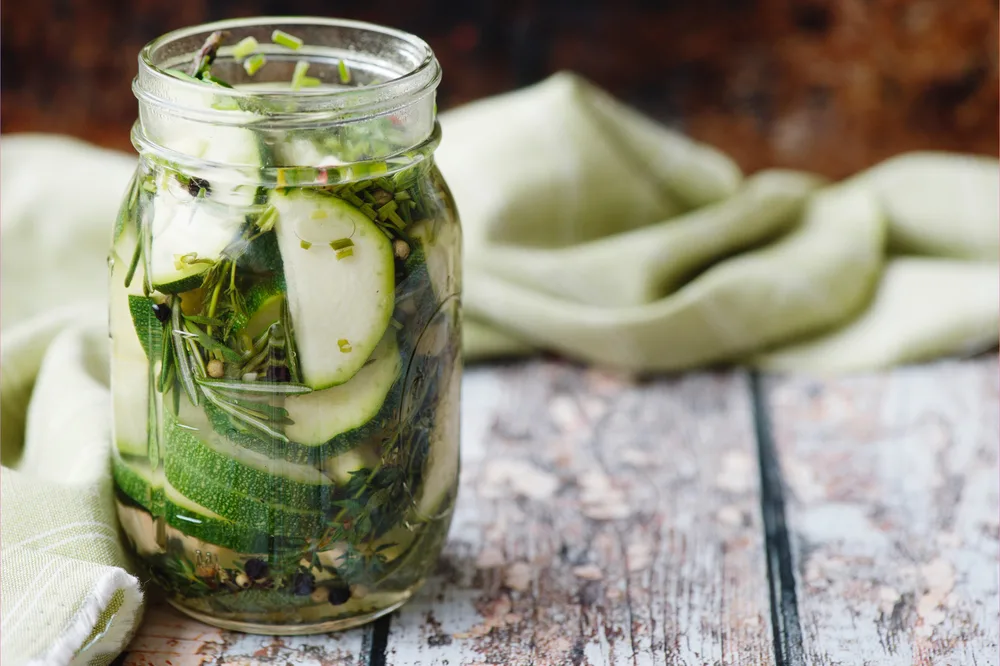
In times and places where you cannot get cucumbers to grow, zucchini will likely emerge as a survivor. It is a staple in our garden ever year for this very reason.
One of our favorite ways to preserve them, is by making pickles. Not the refrigerator kind, the well-preserved, sit-on-the-shelf-for-a-year kind.
If your zucchini is young and tender, you can pickle them in rounds. As they get larger, you might want to cut them into spears or flat slices for tucking into a sandwich.
Here’s my tutorial for making zucchini pickles that last a year or more.
10. Zucchini relish
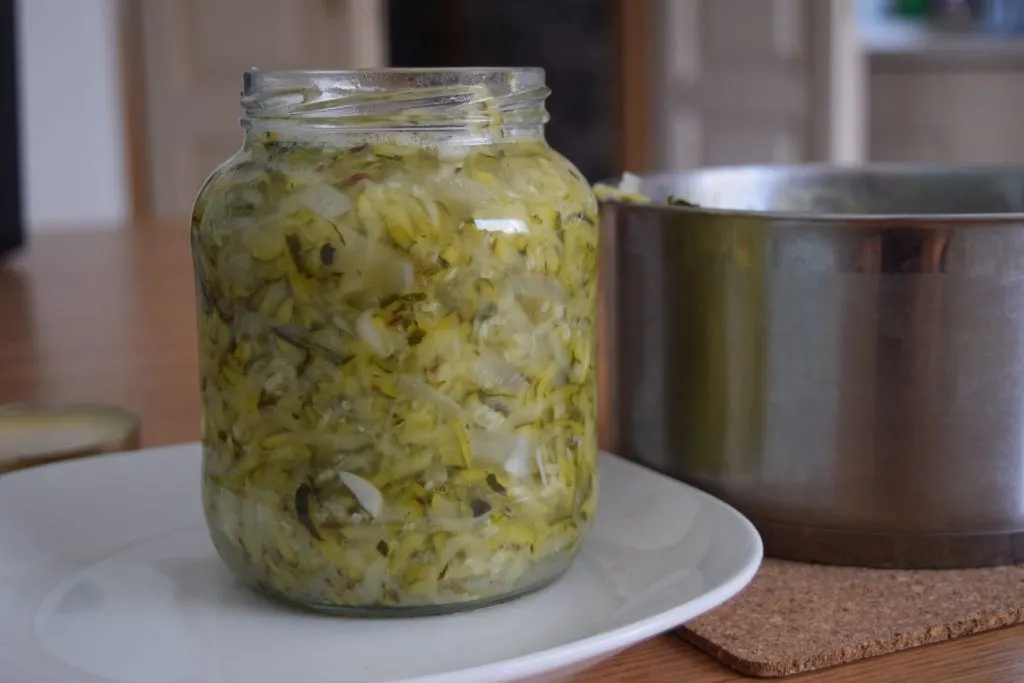
Zucchini relish is a wonderful way to use up slightly larger fruits that have sat a little too long on the vine. Make sure to perform a taste test first, just be sure they are not bitter – as one bitter zucchini or cucumber will ruin the entire pot. A simple way to test for this is to cut off a small slice from the bottom end, put it to your tongue and feel for the response.
So, what type of relish will you make with your glut of zucchini?
Sweet or savory zucchini relish?
Perhaps a few, or 20, jars of sweet and spicy zucchini relish?
If you have plenty of zucchini on hand, you may want to sample them all. That is, if you have enough jars for all that zucchini!
11. Zucchini salsa
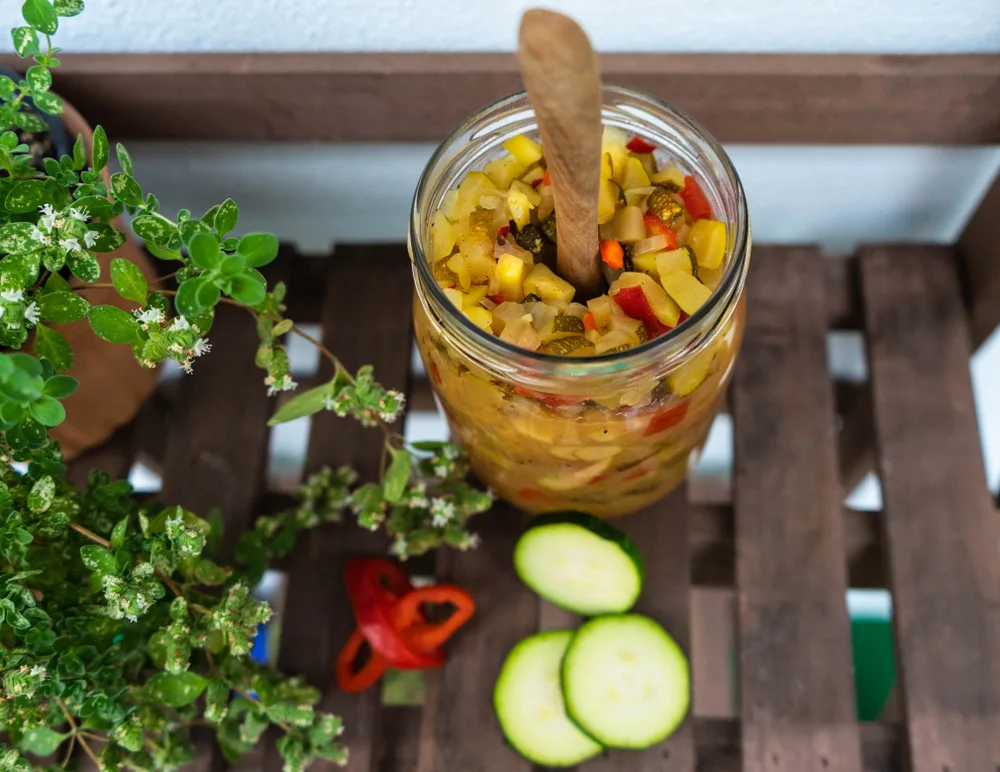
If you are a salsa lover, it is only fitting to try making salsa with zucchini too. This canned zucchini salsa recipe uses up 18-24 cups of finely chopped zucchini, along with sweet white onions, green and red bell peppers, several jalapeño peppers, garlic, tomatoes, vinegar, salt and spices.
Work is involved in the preparation, though the 15-18 pints in the end will be totally worth it. Testimonials prove this to be true.
Although I’ve never canned zucchini salsa personally, it does seem like it would go well with a nice crunchy tortilla chip and it is a must to add to our list of new canning recipes to try this summer.
12. Canned zucchini salad
If you are looking for a different way to can up your zucchini this year, it may be worth looking at a canned zucchini salad recipe.
It is a mixture of tomatoes, zucchini and peppers – all which ripen about the same time. In this much, you can use all of your garden harvest to your advantage.
As for ways to use this “sauce”, you can serve it alongside baked potatoes, spoon it over a bed of rice with a fresh side salad from the garden, or use it as a spaghetti/pasta sauce. Be creative in the kitchen and incorporate it into soups or stews for enhanced flavor and nutritional value too.
13. Zucchini pineapple
Enter the “Mock Pineapple” or “Faux Pineapple.”
Once you have enough zucchini to peel and cube 16 cups, then you are ready to make several jars of zucchini pineapple.
Rather than something to eat straight from the jar, you’ll want to use the pineapple-ized zucchini chunks in another way. You can add them to salads, pop them in a jello mold (I’m sure my Grandma would’ve done that, had she known this recipe existed!), or use them in cakes. Basically anywhere you might use pineapple.
On pizzas though? I’m not certain. You will have to try it first.
14. Zesty hot chili zucchini marmalade
Last on the list of ways to preserve your glut of zucchini, is marmalade. Bet you have never tried this before!
It is tangy, citrusy and spicy with generous amounts of orange, lemon and ginger. There is also hint of cinnamon and cloves tossed in for good measure.
Beyond that, it is an enlightened way to add nasturtiums to your canned goods, for the beautiful color, of course.
If you are seeking to sophisticate your zucchini, now is your chance.
Make this zesty, hot chili zucchini marmalade and be ready with a fleet of beautiful jars to give away as marvelous homemade gifts come wintertime.
Tips for preserving a glut of zucchini
Generally speaking, zucchini thrives in just about any weather, though your zucchini can fall into potential problems. These can be related to companion planting, not preparing the soil well enough for a hungry feeder, or watering mistakes that prepare your crop for a powdery mildew failure.
If all goes well and your garden does continue to produce blossom after fertilized blossom, you will be in for an enormous harvest! (You can also hand pollinate your squash plants!)
As you select your zucchini for freezing, be sure to use younger, rather than sun-aged zucchini. You know the giant boats I am talking about, the ones that hide under the radar for too long, growing to garden submarine size.
Zucchini gets a tough skin as it gets older, and in many cases, you will want to keep this for the added nutrients – especially if it is organic. So, harvest your zucchini for preserving while it is younger. Make sure that is blemish-free, saving those less-than-pretty ones for fresh eating. The best practice in canning is to preserve the very best.
It is also good to avoid canning and freezing older zucchini because there will be a loss of flavor, as well as the seeds to contend with.
Just as with pumpkin seeds, you can also roast zucchini seeds.
If no-waste is your goal, make sure to plant some zucchini this year (or next) as they can be eaten from blossom to seed. They can even be grown in pots. If and when it is deemed unfit for human consumption, allow the chickens and pigs to eat the rest.
How will you be preserving your glut of zucchini this summer?

Get the famous Rural Sprout newsletter delivered to your inbox.
Including Sunday musings from our editor, Tracey, as well as “What’s Up Wednesday” our roundup of what’s in season and new article updates and alerts.


